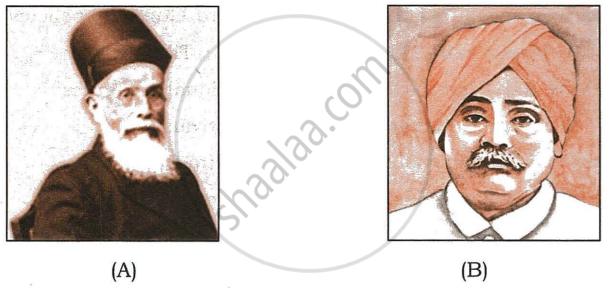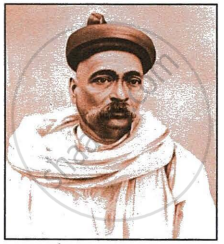Advertisements
Online Mock Tests
Chapters
1: The First War of Independence, 1857
2: Growth of Nationalism
3: First Phase of the Indian National Movement
▶ 4: Second Phase of the Indian National Movement
5: The Muslim League
II. MASS PHASE OF THE NATIONAL MOVEMENT (1915-1947)
6: Mahatma Gandhi and the National Movement
7: Quit India Movement
8: Forward Bloc and The INA
9: Independence and Partition of India
III. THE CONTEMPORARY WORLD
10: The First World War
11: Rise of Dictatorships
12: The Second World War
13: United Nations
14: Major Agencies of the United Nations
15: Non-Aligned Movement
SECTION B - CIVICS : I. THE UNION LEGISLATURE
1: The Union Parliament
II. THE UNION EXECUTIVE
2: The President and The Vice-President
3: Prime Minister and Council of Ministers
III. THE JUDICIARY
4: The Supreme Court
5: The High Courts and Subordinate Courts
![Morning Star solutions for Total History and Civics [English] Class 10 chapter 4 - Second Phase of the Indian National Movement Morning Star solutions for Total History and Civics [English] Class 10 chapter 4 - Second Phase of the Indian National Movement - Shaalaa.com](/images/total-history-and-civics-english-class-10_6:f32d3458d7ba4c159209b7405ae151c7.jpg)
Advertisements
Solutions for Chapter 4: Second Phase of the Indian National Movement
Below listed, you can find solutions for Chapter 4 of CISCE Morning Star for Total History and Civics [English] Class 10.
Morning Star solutions for Total History and Civics [English] Class 10 4 Second Phase of the Indian National Movement EXERCISES [Pages 57 - 60]
Multiple-Choice Questions
What measure did Lord Curzon take to reduce the 'influence of Bengal'?
Partition of Bengal
Swadeshi Movement
Boycott Movement
Bengal Land Act
What justification did Lord Curzon give to the Indians for the Partition of Bengal?
Bengal was too big to be efficiently administered by a single provisional government.
It would cause a hindrance to the national movement.
It would place Bengalis under two administrative units, making them a minority in Bengal.
It would lead to division between Hindu and Muslim Nationalists.
The Partition of Bengal was annuled and a new scheme was implemented on which grounds?
Religious
Linguistic
Cultural
Traditional
Both, Early Nationalists and Assertive Nationalists spoke, wrote, and edited newspapers. Which section had a wider reach and why?
Early Nationalists because they were well educated.
Early Nationalists because they held official positions.
Assertive Nationalists because they used Vernacular press as a medium.
Assertive Nationalists because they used English language as a medium.
Assertive Nationalists adopted the policy of ______ to oppose the unjust acts of the British.
Entreat and beseech
Non-cooperation
Passive redressal
Prayers and petitions
Which of the following was an achievement of Assertive Nationalists?
Annulment of Partition of Bengal
Annulment of Ilbert Bill
Annulment of Arms Act
Annulment of Indian Universities Act
Which of the following international events led to the rise of Assertive Nationalism?
Victory of Japan over Russia
Defeat of Britain in the Anglo-Afghan Wars
Defeat of France in Ethopia
Defeat of Germany in South Africa
Early Nationalists : Ideas of western philosophers : : Assertive Nationalists : ___?___.
Ideas of eastern philosophers
Ideas of Swadeshi
Ideas of Karl Marx
India's past
Early Nationalists : Educated middle class : : Assertive Nationalists : ___?___
Youth and women
The British nationals in India
The masses
The Civil servants
Who among the following was NOT an Assertive Nationalist leader?
Bal Gangadhar Tilak
Lala Lajpat Rai
Bipin Chandra Pal
Dadabhai Naoroji
Why did Swadeshi become a watchword of the National Movement?
It would make India self-sufficient.
It would make Indian goods attractive for export.
It would encourage trade.
It would encourage the British to buy Indian goods.
The split in the Congress occured due to differences between the Early Nationalists and Assertive Nationalists. Which of the following was NOT an issue?
Extension of Swadeshi and Boycott to the whole country
Open support to boycott of foreign goods
Candidature for Congress Presidentship
Indianisation of Civil Services
Short Answer Questions
Who wrote the Vande Mataram?
State the reaction of the masses to the proclamation . of the Partition of Bengal.
Name any two prominent leaders of Anti-Partition agitation of Bengal.
Name the song composed by Rabindranath Tagore during the Anti-partition agitation.
Who were Assertive Nationalists? Why were they so called?
Name three prominent Assertive Nationalist leaders.
What was the aim of the Assertive Nationalists as far as the National Movement was concerned?
How did the Assertive Nationalists expand the social base of the National Movement?
What were the two methods adopted by the Assertive Nationalists in the freedom struggle?
Mention any two causes for the rise of Assertive Nationalism.
Why did the educated Indians tum against the British?
List any two international events that shattered the myth of European superiority.
Mention any two measures that show that Lord Curzon's policies were repressive.
Name the two books written by Bal Gangadhar Tilak.
When and why did Tilak leave the Indian National Congress?
Why did Tilak revive Ganapati and Shivaji festivals?
Mention any two contributions of Bipin Chandra Pal?
Mention any two achievements of the Assertive Nationalists.
Structured Questions
One of Lord Curzon's administrative measures that resulted in a strong resentment from the masses was the partition of Bengal in 1905. In this context, answer the following questions:
- What was Lord Curzon's argument in favour of the partition of Bengal? How did the nationalists interpret Lord Curzon's motives?
- How did the people react to the partition of Bengal?
- What was the impact of the Anti-Partition Movement?
With reference to the Surat Split of 1907, answer the following questions:
- What were the issues on which the two wings of the Congress had differences of opinion? How did the British exploit the differences between the Early Nationalists and the Assertive Nationalists?
- What was the effect of the split between the two wings of the Congress on the National Movement?
- Why did the Assertive Nationalists adopt the policy of non-cooperation with the British Government? Name the Assertive Nationalist leader who organised akharas and lathi clubs. Why were these organised?
In the second phase of the national movement, there emerged a new younger group of leaders within the Congress who did not agree with the old leadership. In this context, answer the following questions:
- Differentiate between the Early Nationalists and the Assertive Nationalists in their objectives and achievements, stating one objective and two achievements of each wing of the Congress.
- Name the Assertive leader known as the forerunner of Gandhiji. Why is the person known as the forerunner of Gandhiji?
- Explain how the repressive policies of Lord Curzon and the influence of International events led to the Assertive nationalism.
Bipin Chandra Pal was said to be "One of the mightiest prophets of nationalism." In this context:
- Mention his political aims.
- State his ideas on National Education.
- What remedies did he propose to eradicate India's poverty and unemployment?
Picture Study
Study the pictures given below and answer the questions that follow:

- Identify the persons 'A' and 'B' given above. To which section of the Congress did each belong and what were their ultimate objectives?
- Highlight three different methods of struggle adopted by each section of the Congress.
- State two contributions of persons 'A' and 'B' to the freedom struggle.
Study the picture given here and answer the following questions:

- Name the leader. State any three of his political beliefs.
- State the means he employed to arouse nationalistic passions.
- In what ways was he the forerunner of Gandhiji?
Thinking Skills
Imagine you are a student who witnessed the protest movement organised by the people of Bengal on October 16, 1905. How did the people react to the Partition of Bengal and what was its impact?
Imagine that you met one of the Assertive Nationalists. After talking to him, you realised the difference in the methods adopted by them and the Early Nationalists. State three of these differences.
Suppose you are a follower of one of the Assertive Nationalist leaders. How would you justify the methods adopted by the Assertive Nationalists to achieve their goal of attainment of .Swaraj?
If you were asked to enact the role of one of the Assertive Nationalist leaders on the occasion of Independence Day, whom would you choose and why?
Solutions for 4: Second Phase of the Indian National Movement
![Morning Star solutions for Total History and Civics [English] Class 10 chapter 4 - Second Phase of the Indian National Movement Morning Star solutions for Total History and Civics [English] Class 10 chapter 4 - Second Phase of the Indian National Movement - Shaalaa.com](/images/total-history-and-civics-english-class-10_6:f32d3458d7ba4c159209b7405ae151c7.jpg)
Morning Star solutions for Total History and Civics [English] Class 10 chapter 4 - Second Phase of the Indian National Movement
Shaalaa.com has the CISCE Mathematics Total History and Civics [English] Class 10 CISCE solutions in a manner that help students grasp basic concepts better and faster. The detailed, step-by-step solutions will help you understand the concepts better and clarify any confusion. Morning Star solutions for Mathematics Total History and Civics [English] Class 10 CISCE 4 (Second Phase of the Indian National Movement) include all questions with answers and detailed explanations. This will clear students' doubts about questions and improve their application skills while preparing for board exams.
Further, we at Shaalaa.com provide such solutions so students can prepare for written exams. Morning Star textbook solutions can be a core help for self-study and provide excellent self-help guidance for students.
Concepts covered in Total History and Civics [English] Class 10 chapter 4 Second Phase of the Indian National Movement are Comparison Between Early Nationalists and Assertive Nationalists, The Anti Partition Movement, Causes of the Partition of Bengal, Surat Split of 1907, Methods of the Assertive Nationalists, Leaders of Assertive Nationalism, The Assertive Nationalists, Partition of Bengal, Achievements of Assertive Nationalists.
Using Morning Star Total History and Civics [English] Class 10 solutions Second Phase of the Indian National Movement exercise by students is an easy way to prepare for the exams, as they involve solutions arranged chapter-wise and also page-wise. The questions involved in Morning Star Solutions are essential questions that can be asked in the final exam. Maximum CISCE Total History and Civics [English] Class 10 students prefer Morning Star Textbook Solutions to score more in exams.
Get the free view of Chapter 4, Second Phase of the Indian National Movement Total History and Civics [English] Class 10 additional questions for Mathematics Total History and Civics [English] Class 10 CISCE, and you can use Shaalaa.com to keep it handy for your exam preparation.
